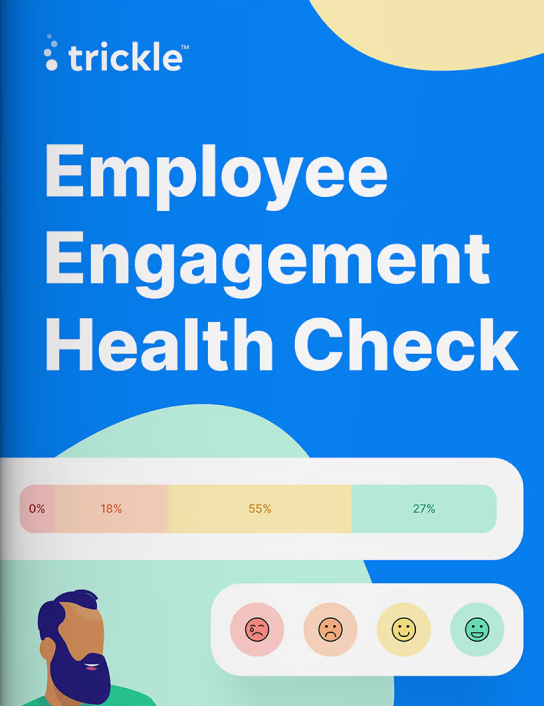How well does your company engage its employees?
Take your health check and find out.


Burnout is on the rise – in fact, Glassdoor cited that it increased by 48% between Summer 2021 and 2022 alone.
And its effects can be devastating, not just for the individual who suffers, but for the organisation, and society itself. Newly released figures by Nuffield Trust show staff sickness in the NHS in England has reached record levels, with mental health issues the top cause.
Burnout leads to decreased job satisfaction, disengagement, increased absenteeism, and high turnover rates. It hampers creativity, innovation, and collaboration, ultimately stifling your organisation’s growth and progress.
Nowadays, our understanding of burnout has shifted, rightly, from an individual problem to an organisational challenge, which needs solutions at an organisational level to solve.
Burnout is not simply a lack of resilience among individuals. It’s a state of chronic physical and emotional exhaustion that can affect people across every industry.
While in the past, many attributed burnout solely to individual issues, and hoped to solve it with arbitrary self-care offerings, a recent article by Harvard Business Review (HBR) defined burnout as “a management and organisational issue, not a physical or mental health issue, so promoting self-care won’t usually help employees recover.”
A recent article by McKinsey explained that research shows, when asked about aspects of their jobs that undermine their mental health and well-being, employees frequently cite the feeling of always being on call, unfair treatment, unreasonable workload, low autonomy, and lack of social support.
The free fruit at reception and subscription to a meditation app just won’t cut it.
While personal circumstances and mental health do play a role, organisational issues are crucial contributors to burnout.
According to HBR, burnout is “a response to chronic job stressors”, made up of six core mismatches reflecting a poor fit between the job and basic human needs such as competence, belonging and psychological safety. These can apply to everyone, regardless of position or job title:
A recent article by Harvard Business Review (HBR) defined burnout as “a management and organisational issue, not a physical or mental health issue, so promoting self-care won’t usually help employees recover.”
The article goes on to identify the root cause of burnout as “a response to chronic job stressors”, made up of six core mismatches reflecting a poor fit between the job and basic human needs such as competence, belonging and psychological safety. These can apply to everyone, regardless of position or job title:
In the recent McKinsey Health Institute (MHI) global survey, toxic workplace behaviour was identified as the single largest predictor of negative employee outcomes, including burnout. Symptoms of a toxic workplace culture include:
It’s no wonder that, when employees face these challenges day in and day out, it takes a toll on their well-being, leading to burnout.
1. Take time to foster a positive workplace culture: Promote a culture that emphasises work-life balance, open communication, and mutual respect. Encourage healthy habits, such as regular breaks and flexible working arrangements. No one can thrive and grow in a toxic workplace.
2. Encourage supportive leadership: Managers need to lead with empathy and understanding to create an environment where everyone feels psychologically safe to speak up. Leaders should encourage open dialogue and provide resources for stress management. Implement regular check-ins to address concerns and offer support.
3. Set clear expectations and realistic workloads: Clearly define roles, responsibilities, and expectations for employees. Ensure that workloads are reasonable, and if you’re hearing otherwise, really listen with a view to making things more manageable.
The Trickle app is a psychologically safe platform for leaders and employees alike. Your team can use it to raise issues, suggestions or improvements at departmental, location or organisational level with the option to remain anonymous, which can remove feelings of judgement. For serious or sensitive issues, employees can seek one-to-one support by confiding in a specific individual or group, again with the option to remain anonymous.
To get started with identifying key stressors, Trickle can help you understand people’s sentiment about something – with individual answers remaining anonymous. A sense of community and reward can be built using ‘Shout Abouts’ to share updates to specific teams, locations or departments and sending ‘Fist Bumps’ to say thank you and show your appreciation.
Trickle can be moulded to any organisation – for one a one-off project, within a specific team, or across a full organisation. Why not book a short demo with one of our friendly team to find out how Trickle can support you?